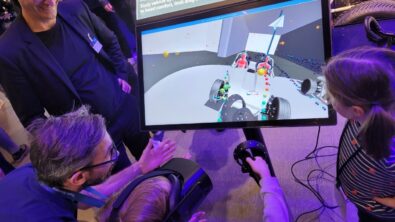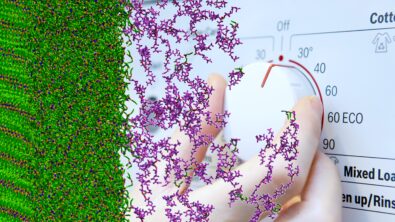Bridging the timescale gap in CHT applications

It’s Sunday afternoon and I am pottering about in the kitchen cooking a Sunday roast. From the living room, I can hear my two children bickering about what they are going to play with. “Why don’t we play with Lego?” says the one. ”I want to play superheroes!” says the other. My husband is, unsuccessfully, trying to reason with them and get them to play together while at the same time sorting some paperwork. This is a typical weekend day for us. Everyone busy, on their own timescale, you could say, but trying to be together as a family. After all, isn’t that what the weekend is all about?
“Lunch is ready” I call from the kitchen, “time to set the table”. They both rush in, still continuing to talk over each other about the preferred game. We finally, sit around the table and the conversation turns more amiable. Now, we are talking about passing potatoes and veg and who wants which part of the chicken. Everyone agrees, the food is yummy!
In physics, as in life, not all processes are on the same timescale. In conjugate heat transfer (CHT) simulations that involve fluids and solids, they can actually be very different. Typically, fluids have fast transients and solids show slow temperature changes for longer periods. Accurate prediction of temperatures in solid components require long simulation times and it is essential for predicting thermal fatigue life. Such cases are turbine blades or engine blocks over the course of a typical use cycle. The challenge in these cases where we have large differences in time scale between fluids and solids is the large, almost prohibitive, computational cost.
The little Sunday routine of ours and its effect on our family life makes me think of this very issue and the new single simulation multi-timescale workflow for CHT introduced in Simcenter STAR-CCM+ v13.06. The new workflow introduces various features with the aim to eliminate the use of complicated macros. In Simcenter STAR-CCM+ v13.02 we introduced dedicated reports for fluid and solid and in Simcenter STAR-CCM+ v13.04 we improved the definition of Total Heat Flux to account for cases where radiation is turned on the fluid. And in this version, Simcenter STAR-CCM+ v13.06, we are introducing two additional very important features, an explicit mapped contact interface and solver specific stopping criteria.
The new explicit fluid-to-solid mapping links the different timescales by passing the right physical quantities, taking radiation and other thermal effects into consideration. In the case of transient flows, an efficient averaging mechanism can be employed on the thermal properties. It also enables coupling with the Finite Element solid energy solver also released in Simcenter STAR-CCM+ v13.06. This mainstreams multi-scale CHT simulations and eliminates user error.
Related to this, the latest version also provides new solver-specific stopping criteria to aid simulations that run multiple solvers consecutively. Previous stopping criteria were shared by solvers, forcing users to write lengthy macros to change the values when switching solvers. Simcenter STAR-CCM+ v13.06 moves the ownership of stopping criteria from the user to the solvers and introduces fixed stopping criteria in a “delta” sense enabling automation and consecutive multiple solver iterations. This means that in a multi-timescale simulation the fixed number of iterations will run will run without manual interaction, every time the continua is activated.
The case used here to demonstrate the functionality is an exhaust manifold with the heat shield included. It’s a case of heating up the engine up to a certain temperature. Those simulations can take up a lot of time as the solid might take a few minutes to heat up while the fluid, if run transient, needs a time step of about 1e-4 to converge. In this case for simplicity we run the fluid as steady.
Use of solver specific stopping criteria takes advantage of the faster convergence of the fluid as simulation progresses, so fewer exchanges are needed. Several stopping criteria are used to trigger a rerun of the fluid. What’s particularly nice with this set-up, is that the expensive fluid part of the simulation is initially using more iterations but as the simulation progresses the number of fluid iterations required to converge to the monitor-based stopping criteria is significantly reduced. It is obvious that the new solver-based stopping criteria provide the user with easy access to tools that enable speed up of expensive CHT simulations.
In the animation you can see the temperature changes with time. The vertical lines signify a fluid run. Exchange is happening through the explicit mapped contact interface when the solid temperature shows a certain delta of temperature. This way we make sure we don’t exchange when it is not needed, and the explicit mapped contact interface takes care of the averaging ensuring accurate passing of information either side.
Which brings me back to my family lunch on that beautiful Sunday afternoon. Makes me think of how a family lunch can bring us all together, just like the explicit mapped contact interface, and how we all need to have our very own control of our time. Lunch is now finished, and we are tidying-up. As we are finishing putting the plates away I can hear them laughing. “Let’s make superheroes with Lego” they say to each other and wander off happily.



